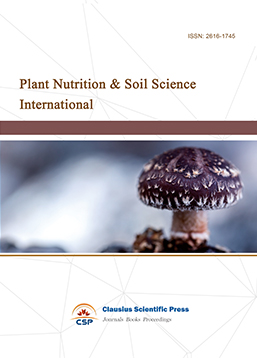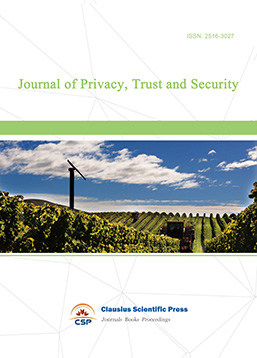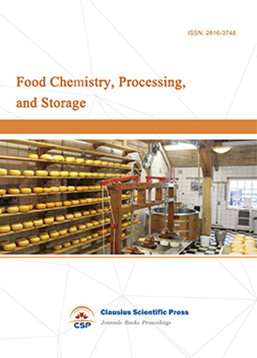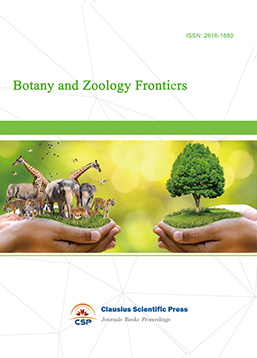Quality and Flavor Changes of Hunan Flavor Leisure Dried Bean Curd under Short Term Storage at Different Temperatures
DOI: 10.23977/afshn.2022.040105 | Downloads: 37 | Views: 1953
Author(s)
Xueyun Luo 1, Lebin Yin 1, Xuewei Yang 1, Chao He 1, Cong Liu 1, Wenguang Zou 1
Affiliation(s)
1 College of Food and Chemical Engineering, Shaoyang University, Shaoyang, China
Corresponding Author
Lebin YinABSTRACT
Different temperature storage of Hunan flavor leisure dried bean curd not only caused changes in texture and quality, but also affected the volatile flavor substances of dried beans, which influenced the overall evaluation of dried beans. In this study, dried beans stored at different temperatures were measured using a mass spectrometer and lipid oxidation measurement method to analyze the effects of different temperatures on the quality and volatile flavor substances of dried beans under short-term storage. The test results showed that the internal color of Hunan flavor leisure dried bean curd became darker with the increase of storage temperature; the texture of Hunan flavor leisure dried bean curd stored at different temperatures changed, and the hardness of Hunan flavor leisure dried bean curd increased with the increase of temperature, and the most significant change was observed in Hunan flavor leisure dried bean curd stored at 60℃; the degree of lipid oxidation increased gradually with the increase of storage temperature; the volatile flavor substances also differed and produced different representative flavor substances. Different representative flavor substances were produced. Therefore, the lower the temperature, the smaller the change in the dried beans, and 4℃ is the best storage condition.
KEYWORDS
Dried Hunan-style casual beans, quality, lipid oxidation, volatile flavor substancesCITE THIS PAPER
Xueyun Luo, Lebin Yin, Xuewei Yang, Chao He, Cong Liu, Wenguang Zou, Quality and Flavor Changes of Hunan Flavor Leisure Dried Bean Curd under Short Term Storage at Different Temperatures. Advances in Food Science and Human Nutrition (2022) Vol. 4: 29-37. DOI: http://dx.doi.org/10.23977/afshn.2022.040105.
REFERENCES
[1] Ying Jin, Changes and applications of antigen protein and nutritional characteristics of soybean during germination, M.S., Zhengzhou University of Light Industry, 2020.
[2] Zhang Wenyi, "Nutritional Evaluation of Wet Processing of Whole Soybean and Its Hypolipidemic Efficacy", M.S., Jiangnan University, 2016.
[3] Li Aochen, Research Progress on Main Nutrient Components and Nutritional Value of Soybean, Modern Agricultural Science and Technology, Issue 23, pp. 213-214+218, 2020.
[4] Shi Chen, Wang Peng, Li Da and Yang Qingwei, "Production Process and Optimization of Ready-to-eat Dried Tofu in Central Xiang", Food Research and Development, Volume 38, Issue 16, pp. 118–121, 2017.
[5] J. Xu, "Electronic nose for volatile organic compounds analysis in rice aging," p. 11, 2021.
[6] M. Han, "Effect of mixed Lactobacillus on the physicochemical properties of cloudy apple juice with the addition of polyphenols-concentrated solution," Food Bioscience, p. 7, 2021.
[7] Ruiyu Yan et al., "Analysis of flavor substances of buckwheat probiotic fermented milk based on GC-IMS technology", Food Science and Technology, Volume 47, Issue 4, pp. 303–309, 2022, doi: 10/gq8hw4.
[8] X. Fan, “Characterizing the volatile compounds of different sorghum cultivars by both GC-MS and HS-GC-IMS,” Food Research International, p. 11, 2021.
[9] M. R. Kim, A. M. Abd. El-Aty, I. S. Kim, and J. H. Shim, "Determination of volatile flavor components in danggui cultivars by solvent free injection and hydrodistillation followed by gas chromatographic–mass spectrometric analysis," J. Chromatogr. A, p. 6, 2021.
[10] Yan Hongguang, Zhang Jianjiao, Huo Yujia and Yuan Wei, "Analysis of Flavor Substances of Different Yeast Fermented Blueberry Wine Based on GC-IMS Technology", Science and Technology of Food Industry, Volume 42, Issue 8, pp. 235–241, 2021, doi: 10/gq8hwx.
[11] N. Arroyo-Manzanares, 'Untargeted headspace gas chromatography – Ion mobility spectrometry analysis for detection of adulterated honey' , p. 26, 2019.
[12] R. Rodríguez-Maecker, "Identification of terpenes and essential oils by means of static headspace gas chromatography-ion mobility spectrometry," p. 9, 2017.
[13] S. Wang, H. Chen, and B. Sun, "Recent progress in food flavor analysis using gas chromatography– ion mobility spectrometry (GC–IMS)," p. 39, 2020.
[14] L. Yang et al., "Characterization of Volatile Component Changes in Jujube Fruits during Cold Storage by Using Headspace-Gas Chromatography-Ion Mobility Spectrometry," p. 21, 2019.
[15] Wu Yongkang et al., "Analysis of the Effect of Crushing Rate on Volatile Substances in Indica Rice Based on GC-IMS", Food and Machinery, Vol. 37, Issue 12, pp. 26–31, 2021, doi: 10/gq8hw3.
[16] Y. Yang, "HS-GC-IMS with PCA to analyze volatile flavor compounds across different production stages of fermented soybean whey tofu," Food Chemistry, p. 9, 2021.
[17] Lina Zhu, Xintao Meng, Bin Xu, Mingqiang Xu, Jian Pan and Zhijie Mu, "Postharvest flavor substance changes in modified atmosphere packaged fruits of Lunan white apricot based on vapor phase ion mobility spectroscopy", Modern Food Science and Technology, Volume 35, Issue 8, pp. 294–303, 2019, doi: 10/gq8hwz.
[18] Daoqiang Yang, Jianrong Xing and Shengmin Lu, "Effects of Different Soybean Pretreatment Methods on Soy Milk Quality", Food Science, Volume 37, Issue 1, pp. 69–73, 2016.
[19] Fan Liu et al., "The Effect of Different Pulping Processes on Soymilk Quality", Food and Fermentation Industry, Volume 46, Issue 7, pp. 148–154, 2020.
[20] Qing Zhang, Nuo Yuan, Xiaofei Zhang, Yijiao Peng, Hong Guo and Jinhong Zhao, "Effect of Sterilization Temperature on Fat Oxidation and Quality of Braised Eggs", Food Science, Volume 43, Issue 5, pp. 69–75, 2022.
[21] Wei, L. Effect of rosemary extract on the oxidation of oil during storage of barley, Food Science and Technology , Volume 46, Issue 11, pp. 155–160, 2021.
[22] Yuan Nuo et al., "The Effect of Pulsating Pressure Technology on the Efficiency and Quality of Braised Egg Pickling", Food Science, Volume 41, Issue 15, pp. 164–170, 2020.
[23] Dengyong Liu, Yang Tan, Shengmei Gai, Na Feng, Dongxue Guan and Huili Zhang, "Changes of fats and fatty acids during braised pork belly", Food Science, Volume 36, Issue 23, pp. 28–32, 2015.
[24] Xu Yan, Qian Xiangyu, Zhu Wenzheng, Ge Qingfeng and Zhou Xiaoyan, "Changes in fats and fatty acids during the stewing of braised pork", Chinese Condiments, Volume 44, Issue 2, pp. 5–9, 2019.
[25] Huang Benting, Zhang Jiamin, Wang Wei, Bai Ting and Ji Lili, "Effect of Different Processing Techniques on the Quality of Preconditioned Back Pot Meat", Chinese Condiments, Volume 45, Issue 3, pp. 11–14, 2020.
[26] Zhou Huijian et al., "Effects of sterilization methods on fatty acid composition and volatile flavor of braised goose", Food Science, Volume 40, Issue 18, pp. 216–222, 2019.
[27] He Liyuan, "Effects of Different Processing Methods on Lipid Oxidation and Fatty Acids in Poultry Eggs", M.A., Huazhong Agricultural University, 2015. [Online].
[28] Zhang Kaige, "Study on the Effect of Cooking Conditions on Lipid Oxidation of Braised Chicken Thighs", M.S., Henan Agricultural University, 2018. [Online].
[29] Xu Yang, Zhanming Li and Dongren Zhou, "Research Progress of Gas Chromatography - Ion Transport Spectroscopy for Food Adulteration and Traceability", China Fruit and Vegetables, Vol. 41, Issue 10, pp. 46–51, 2021, doi: 10/GQ8HZD.
[30] Li Yang, Alin Xia, Yu Zhang and Wenfei Qian, "Rapid Discriminant Analysis Technology of Dried Tofu Based on Electronic Nose", Food Science and Technology, Vol. 45, Issue 12, pp. 307–312, 2020, doi: 10/gq8hzc.
| Downloads: | 2590 |
|---|---|
| Visits: | 90208 |

 Download as PDF
Download as PDF



